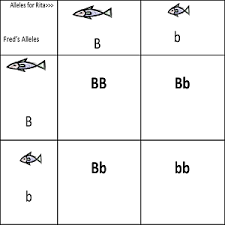In genetics, traits are classified into two groups based on their mode of inheritance and their effects on an organism’s phenotype: qualitative and quantitative traits. All genetic traits in an organism fit into one of these two categories.
Quantitative Traits and Their Inheritance
Quantitative traits exhibit a continuous range of variation and do not fit into distinct categories. They are economically important measurable phenotypic traits, such as body weight, height, susceptibility to diseases, milk yield, and meat or egg production in poultry.
These traits are also known as metric traits. Generally, quantitative traits are influenced by a large number of genes, referred to as polygenic traits. They are easily affected by environmental factors, which may modify their expression.
The inheritance of polygenes or quantitative traits is referred to as quantitative inheritance, multiple-factor inheritance, multiple-gene inheritance, or polygenic inheritance. This means that these traits are controlled by many genes. The characteristics of quantitative inheritance include:
- Segregation occurs at a large number of gene loci.
- Genes for a multiple trait have different biochemical functions but similar phenotypic effects.
- Blocks of genes are transmitted as units from inversion heterozygotes to their progeny but may be broken up by crossing over in insertion homozygotes.
- Polygenes exhibit pleiotropic effects, meaning that one gene may influence multiple phenotypic traits.
- Environmental conditions significantly affect the expression of polygenes for quantitative traits.
Read Also: The Appearance and Features of Tuna Fish
Qualitative Traits and Their Inheritance

Qualitative traits are easily classified into distinct or discrete categories. This means that these traits can be clearly grouped. For example, coat color in animals (black or white) and traits that are either present or absent, such as horns in cattle or beards in goats, fall into this category.
Inherited diseases caused by single mutations are also examples of qualitative traits. The ABO human blood group system illustrates this concept well. Except in rare cases, humans fall into one of four categories: A, B, AB, or O, making this a qualitative trait.
The pattern of inheritance for qualitative traits is typically monogenic, meaning that a single gene or a small group of genes controls the trait. Environmental factors have little to no influence on the expression of these traits, resulting in minimal modifications to gene effects.
Read Also: The Appearance and Features of Tilapia Fish
Differences Between Quantitative and Qualitative Traits

The main differences between quantitative and qualitative traits involve the number of genes contributing to phenotypic variability and the degree to which environmental factors can modify the phenotype.
| Quantitative Traits | Qualitative Traits |
|---|---|
| Controlled by many genes (polygenic) | Controlled by one or few genes (monogenic) |
| Easily influenced or modified by environmental factors | Not easily influenced or modified by environmental factors |
| Exhibit continuous variation, forming a spectrum | Exhibit discontinuous variation |
| Measurable traits (e.g., body weight, milk yield) | Discrete traits (e.g., coat color, presence of horns) |
| Concerned with population-level inheritance | Concerned with individual inheritance |
| Polygenic inheritance pattern | Monogenic inheritance pattern |
| Mostly associated with economic traits | Mostly associated with aesthetic or breed-specific traits |
Quantitative traits are largely controlled by multiple genes and are easily influenced by environmental factors, making them subject to modification.
In contrast, qualitative traits are controlled by one or a few genes and are not significantly affected by environmental factors. Understanding these traits is essential for designing appropriate breeding techniques to improve livestock.
In animal breeding, traits are grouped into qualitative and quantitative traits based on their mode of inheritance and phenotypic effects. Quantitative traits exhibit continuous variation and follow a polygenic inheritance pattern, meaning they are influenced by many genes.
They are also susceptible to environmental modifications. Qualitative traits, on the other hand, are classified into distinct categories and follow a monogenic inheritance pattern, meaning they are influenced by a single gene or a small group of genes. Environmental effects on qualitative traits are minimal, resulting in little to no phenotypic modifications.
Do you have any questions, suggestions, or contributions? If so, please feel free to use the comment box below to share your thoughts. We also encourage you to kindly share this information with others who might benefit from it. Since we can’t reach everyone at once, we truly appreciate your help in spreading the word. Thank you so much for your support and for sharing!

